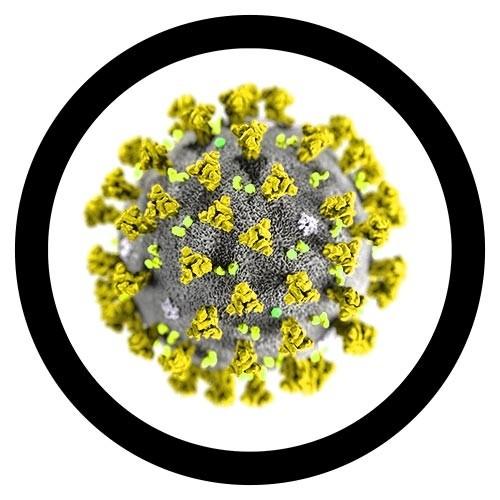GIANTmicrobes
Coronavirus COVID-19 Gigantic 16"
Coronavirus COVID-19 Gigantic 16"
Couldn't load pickup availability
COVID-19 has arrived and quickly spread globally along with confusion, rumors and fear. Scientists investigate therapies and vaccines as nations “go medieval” by quarantining citizens. What should you do when a mysterious microbe comes knocking? Start by staying calm and learning the facts.
COVID-19 is respiratory, spreading mainly in coughs and sneezes. Symptoms can include fever, cough and shortness of breath. To prevent illness wash your hands and do not panic. And for all of humanity, let's fight this plague with decency.
All About Coronavirus COVID-19 Gigantic 16"
FACTS: Cities are locked down, schools and businesses are closed, economies quiver and thousands of people are quarantined. The World Health Organization declares a global pandemic. This is the face of the coronavirus disease named COVID-19.
Identified in 2019 in China, COVID-19 quickly spread around the world during 2020. Spreading along with it: confusion, rumors and fear. Even in 2021, much about this virus remains unclear. Compared to the seasonal flu, COVID-19 is more contagious and has a higher fatality rate. Scientists and public health experts scramble to confront it with 21st century therapies and vaccines. Meanwhile, governments “go medieval” by closing borders and isolating citizens inside their tainted towns. What should you do when a mysterious microbe comes knocking and the threat of a modern day plague is in the air? Start by staying calm and learning the facts.
The name COVID-19 stands for coronavirus and disease. Corona is for its crown-like protein spikes. The virus itself is named SARS-CoV-2. Coronaviruses are zoonotic, jumping from animals to humans. Many originate in bats. SARS was transmitted by civets, MERS by camels, and COVID-19 likely by animals sold in wildlife food markets. With contagious microbes, you are often at the mercy of nature and the interconnectedness of our world.
COVID-19 spreads from person-to-person through respiratory droplets carried in coughs or sneezes. It may also be transmitted by touching your mouth, eyes or nose after touching contaminated metal, plastic and other hard surfaces on which a virus can survive the longest. People are most contagious when showing signs of sickness, yet the virus can spread before symptoms occur. Symptoms may appear 2 to 14 days after exposure and can include loss of smell, fever, cough and shortness of breath. Some have no symptoms at all. The best way to prevent illness is to minimize exposure with common-sense measures. Avoid close contact with people who are sick. Do not touch your eyes, nose and mouth. Stay home when sick. Cover your cough and sneeze with a tissue. Disinfect frequently touched surfaces. Wash your hands often with soap and water. Wear a face mask to help protect yourself, protect others and slow the spread of COVID-19.
Microbes are remarkable and mostly good - vital to our bodies and our planet. However, when it comes to the struggle against flu, measles, black death, malaria and other infectious diseases such as COVID-19, it is human wits versus microbe genes. If we want to triumph, we must think clearly, learn, prepare and respect the microbial world.






